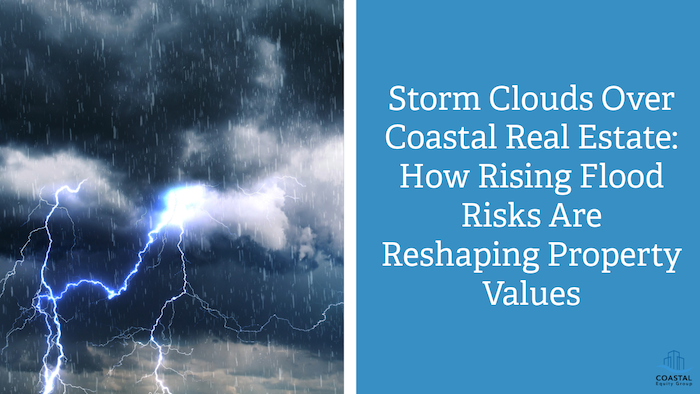
If you’ve been watching the real estate market along the Southeast coast, you’ve probably noticed the growing buzz around flood zones, storm risks, and rising insurance costs. For investors, these aren’t just small concerns and considerations; they’re deal-changers. Whether you’re looking at a flip in Florida, a rental in the Carolinas, or a beach property in Georgia, ignoring storm-related risks can put your returns in serious jeopardy.
The question isn’t if storms will affect property values, but how much and how fast. Let’s dig into what’s happening and what investors should be paying attention to.
Insurance Costs: The Silent Deal Breaker
It’s no secret that coastal insurance rates are climbing. In some parts of Florida, premiums have doubled or even tripled in just a few years. For investors, that shift can erode rental income, stretch rehab budgets, and shrink resale margins. Always get an insurance quote before finalizing a deal. What looks like a profitable flip on paper can turn into a money pit if annual premiums eat into your returns.
Elevation Matters More Than Ever
Two houses on the same street can have drastically different risk profiles based on elevation. Properties just a few feet lower may face higher flood insurance costs or stricter building requirements. When scouting coastal investments, pull FEMA flood maps and elevation certificates. A slightly higher property might carry lower long-term costs, even if the purchase price is a bit higher upfront.
Storm-Proofing as a Value Booster
Buyers and renters are increasingly looking for homes with storm-resistant features like impact windows, elevated foundations, or reinforced roofs. What used to be a “nice bonus” is quickly becoming a “must-have.” Adding storm-proof upgrades during a flip can set your property apart and justify higher resale values. Think of it as future-proofing your investment.
Spotting the “At-Risk” Properties
Not all risks are obvious at first glance. A home outside a FEMA-designated flood zone might still flood due to outdated maps or poor drainage. Investors who only rely on official designations risk being blindsided. Talk with neighbors, check local news archives for past flooding, and walk the property after heavy rain. Local knowledge often reveals what maps miss.
The Long Game: Market Perception Shifts
Even in areas that haven’t been hit directly, buyer perception is changing. If a neighborhood has a reputation for flooding even if only a handful of homes were affected, property values can take a hit. Once a market gets labeled “risky,” investors may need to hold longer or price more aggressively to sell.
Coastal real estate still offers tremendous opportunities, but flood and storm risks are reshaping the rules of the game. Investors who adapt by factoring in insurance, elevation, and storm-proofing will be better positioned to spot the winners and avoid the traps.
At the end of the day, being proactive isn’t just about protecting profits. It’s about investing smarter in markets that are changing faster than ever.
If you’re eyeing coastal investments, now’s the time to add flood risk and storm resilience to your checklist. The best deals aren’t just about price, they’re about sustainability and staying power in a changing market.
Coastal Equity Group
15 State Street
Charleston, SC 29401
in**@****************up.com
843-737-0182
How can we help you?
Please submit your information here along with a brief message.
